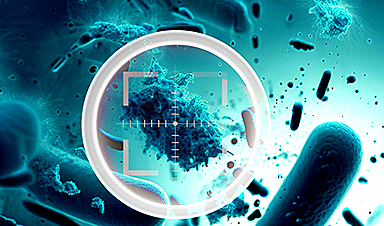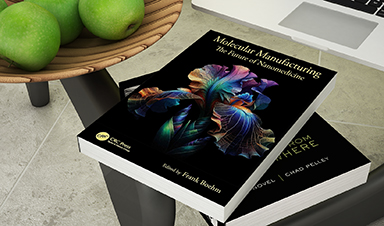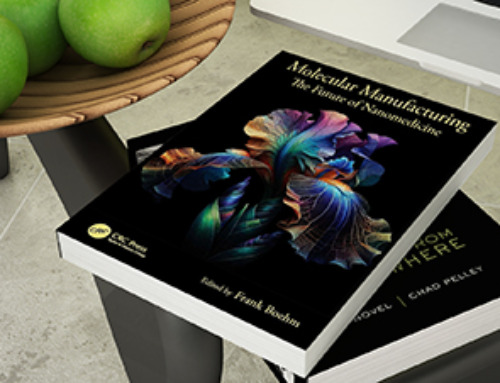Researchers from the University of Illinois Chicago and Harvard University have created an antibiotic that may provide medicine a new tool to combat bacteria resistant to drugs and the illnesses they trigger.
The antibiotic, cresomycin, described in Science, effectively suppresses pathogenic bacteria that have become resistant to many commonly prescribed antimicrobial drugs.
The promising novel antibiotic is the latest finding for a longtime research partnership between the group of Yury Polikanov, associate professor of biological sciences at UIC, and colleagues at Harvard. The UIC scientists provide critical insights into cellular mechanisms and structure that help the researchers at Harvard design and synthesize new drugs.
Understanding Antibiotic Resistance
In developing the new antibiotic, the group focused on how many antibiotics interact with a common cellular target – the ribosome – and how drug-resistant bacteria modify their ribosomes to defend themselves.
More than half of all antibiotics inhibit the growth of pathogenic bacteria by interfering with their protein biosynthesis – a complex process catalyzed by the ribosome, which is akin to "a 3D printer that makes all the proteins in a cell," Polikanov said. Antibiotics bind to bacterial ribosomes and disrupt this protein-manufacturing process, causing bacterial invaders to die.
But many bacterial species evolved simple defenses against this attack. In one defense, they interfere with antibiotic activity by adding a single methyl group of one carbon and three hydrogen atoms to their ribosomes.
Scientists speculated that this defense was simply bacteria physically blocking the site where drugs bind to the ribosome, "like putting a push pin on a chair," Polikanov said. But the researchers found a more complicated story, as they described in a paper recently published in Nature Chemical Biology.
By using a method called X-ray crystallography to visualize drug-resistant ribosomes with nearly atomic precision, they discovered two defensive tactics. The methyl group, they found, physically blocks the binding site, but it also changes the shape of the ribosome's inner "guts," further disrupting antibiotic activity.
Overcoming Bacterial Defenses
Polikanov's laboratory then used X-ray crystallography to investigate how certain drugs, including one published in Nature by the UIC/Harvard collaboration in 2021, circumvent this common form of bacterial resistance.
"By determining the actual structure of antibiotics interacting with two types of drug-resistant ribosomes, we saw what could not have been predicted by the available structural data or by computer modeling," Polikanov said. "It's always better to see it once than hear about it 1,000 times, and our structures were important for designing this promising new antibiotic and understanding how it manages to escape the most common types of resistance."
Cresomycin, the new antibiotic, is synthetic. It's preorganized to avoid the methyl-group interference and attach strongly to ribosomes, disrupting their function. This process involves locking the drug into a shape that is pre-optimized to bind to the ribosome, which helps it get around bacterial defenses.
"It simply binds to the ribosomes and acts as if it doesn't care whether there was this methylation or not," Polikanov said. "It overcomes several of the most common types of drug resistance easily."
Cresomycin's Promising Potential
In animal experiments conducted at Harvard, the drug protected against infections with multidrug-resistant strains of common disease drivers including Staphylococcus aureus, Escherichia coli, and Pseudomonas aeruginosa. Based on these promising results, the next step is to assess the effectiveness and safety of cresomycin in humans.
But even at this early stage, the process demonstrates the critical role that structural biology plays in designing the next generation of antibiotics and other life-saving medicines, according to Polikanov.
"Without the structures, we would be blind in terms of how these drugs bind and act upon modified drug-resistant ribosomes," Polikanov said. "The structures that we determined provided fundamental insight into the molecular mechanisms that allow these drugs to evade the resistance."
Reference: "An antibiotic preorganized for ribosomal binding overcomes antimicrobial resistance" by Kelvin J. Y. Wu, Ben I. C. Tresco, Antonio Ramkissoon, Elena V. Aleksandrova, Egor A. Syroegin, Dominic N. Y. See, Priscilla Liow, Georgia A. Dittemore, Meiyi Yu, Giambattista Testolin, Matthew J. Mitcheltree, Richard Y. Liu, Maxim S. Svetlov, Yury S. Polikanov and Andrew G. Myers, 15 February 2024, Science.
DOI: 10.1126/science.adk8013
News
Two New Books From Frank Boehm, NA Founder – To be Released Dec. 2025
Molecular Manufacturing: The Future of Nanomedicine This book explores the revolutionary potential of atomically precise manufacturing technologies to transform global healthcare, as well as practically every other sector across society. This forward-thinking volume examines [...]
What could the future of nanoscience look like?
Society has a lot to thank for nanoscience. From improved health monitoring to reducing the size of electronics, scientists’ ability to delve deeper and better understand chemistry at the nanoscale has opened up numerous [...]
Scientists Melt Cancer’s Hidden “Power Hubs” and Stop Tumor Growth
Researchers discovered that in a rare kidney cancer, RNA builds droplet-like hubs that act as growth control centers inside tumor cells. By engineering a molecular switch to dissolve these hubs, they were able to halt cancer [...]
Platelet-inspired nanoparticles could improve treatment of inflammatory diseases
Scientists have developed platelet-inspired nanoparticles that deliver anti-inflammatory drugs directly to brain-computer interface implants, doubling their effectiveness. Scientists have found a way to improve the performance of brain-computer interface (BCI) electrodes by delivering anti-inflammatory drugs directly [...]
After 150 years, a new chapter in cancer therapy is finally beginning
For decades, researchers have been looking for ways to destroy cancer cells in a targeted manner without further weakening the body. But for many patients whose immune system is severely impaired by chemotherapy or radiation, [...]
Older chemical libraries show promise for fighting resistant strains of COVID-19 virus
SARS‑CoV‑2, the virus that causes COVID-19, continues to mutate, with some newer strains becoming less responsive to current antiviral treatments like Paxlovid. Now, University of California San Diego scientists and an international team of [...]
Lower doses of immunotherapy for skin cancer give better results, study suggests
According to a new study, lower doses of approved immunotherapy for malignant melanoma can give better results against tumors, while reducing side effects. This is reported by researchers at Karolinska Institutet in the Journal of the National [...]
Researchers highlight five pathways through which microplastics can harm the brain
Microplastics could be fueling neurodegenerative diseases like Alzheimer's and Parkinson's, with a new study highlighting five ways microplastics can trigger inflammation and damage in the brain. More than 57 million people live with dementia, [...]
Tiny Metal Nanodots Obliterate Cancer Cells While Largely Sparing Healthy Tissue
Scientists have developed tiny metal-oxide particles that push cancer cells past their stress limits while sparing healthy tissue. An international team led by RMIT University has developed tiny particles called nanodots, crafted from a metallic compound, [...]
Gold Nanoclusters Could Supercharge Quantum Computers
Researchers found that gold “super atoms” can behave like the atoms in top-tier quantum systems—only far easier to scale. These tiny clusters can be customized at the molecular level, offering a powerful, tunable foundation [...]
A single shot of HPV vaccine may be enough to fight cervical cancer, study finds
WASHINGTON -- A single HPV vaccination appears just as effective as two doses at preventing the viral infection that causes cervical cancer, researchers reported Wednesday. HPV, or human papillomavirus, is very common and spread [...]
New technique overcomes technological barrier in 3D brain imaging
Scientists at the Swiss Light Source SLS have succeeded in mapping a piece of brain tissue in 3D at unprecedented resolution using X-rays, non-destructively. The breakthrough overcomes a long-standing technological barrier that had limited [...]
Scientists Uncover Hidden Blood Pattern in Long COVID
Researchers found persistent microclot and NET structures in Long COVID blood that may explain long-lasting symptoms. Researchers examining Long COVID have identified a structural connection between circulating microclots and neutrophil extracellular traps (NETs). The [...]
This Cellular Trick Helps Cancer Spread, but Could Also Stop It
Groups of normal cbiells can sense far into their surroundings, helping explain cancer cell migration. Understanding this ability could lead to new ways to limit tumor spread. The tale of the princess and the [...]
New mRNA therapy targets drug-resistant pneumonia
Bacteria that multiply on surfaces are a major headache in health care when they gain a foothold on, for example, implants or in catheters. Researchers at Chalmers University of Technology in Sweden have found [...]
Current Heart Health Guidelines Are Failing To Catch a Deadly Genetic Killer
New research reveals that standard screening misses most people with a common inherited cholesterol disorder. A Mayo Clinic study reports that current genetic screening guidelines overlook most people who have familial hypercholesterolemia, an inherited disorder that [...]





















